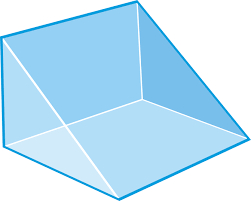Prism - right isosceles
Find the volume and surface of a prism with a height of 120 mm. Its base is a right isosceles triangle with a leg length of 5 cm.
Final Answer:

Tips for related online calculators
See also our right triangle calculator.
Tip: Our volume units converter will help you convert volume units.
Calculation of an isosceles triangle.
See also our trigonometric triangle calculator.
Tip: Our volume units converter will help you convert volume units.
Calculation of an isosceles triangle.
See also our trigonometric triangle calculator.
You need to know the following knowledge to solve this word math problem:
arithmeticsolid geometryplanimetricsUnits of physical quantitiesGrade of the word problem
Related math problems and questions:
- Triangular prism
 The base of the perpendicular triangular prism is a right triangle with a leg length of 5 cm. The area of the largest sidewall of its surface is 130 cm², and the body's height is 10 cm. Calculate its volume.
The base of the perpendicular triangular prism is a right triangle with a leg length of 5 cm. The area of the largest sidewall of its surface is 130 cm², and the body's height is 10 cm. Calculate its volume. - The regular
 The regular triangular prism has a base in the shape of an isosceles triangle with a base of 86 mm and 6.4 cm arms; the height of the prism is 24 cm. Calculate its volume.
The regular triangular prism has a base in the shape of an isosceles triangle with a base of 86 mm and 6.4 cm arms; the height of the prism is 24 cm. Calculate its volume. - Triangular prism
 Calculate the volume and surface of the triangular prism ABCDEF with the base of an isosceles triangle. Base's height is 16 cm, leg 10 cm, base height vc = 6 cm. The prism height is 9 cm.
Calculate the volume and surface of the triangular prism ABCDEF with the base of an isosceles triangle. Base's height is 16 cm, leg 10 cm, base height vc = 6 cm. The prism height is 9 cm. - Isosceles triangle
 The leg of the isosceles triangle is 5 dm, and its height is 20 cm longer than the base. Calculate base length z.
The leg of the isosceles triangle is 5 dm, and its height is 20 cm longer than the base. Calculate base length z. - Prism
 A right-angled prism, whose base is a right triangle with leg a = 3 cm and hypotenuse c = 6 cm, has the same volume as a cube with an edge length of 1 dm. a) Find the height of the prism b) Calculate the surface of the prism c) What percentage of the cube
A right-angled prism, whose base is a right triangle with leg a = 3 cm and hypotenuse c = 6 cm, has the same volume as a cube with an edge length of 1 dm. a) Find the height of the prism b) Calculate the surface of the prism c) What percentage of the cube - Right prism
 The base of the right prism is a right triangle with leg a = 5 cm and a hypotenuse c = 13 cm. The height of the prism is equal to the circumference of the base. Calculate the surface area and volume of the prism.
The base of the right prism is a right triangle with leg a = 5 cm and a hypotenuse c = 13 cm. The height of the prism is equal to the circumference of the base. Calculate the surface area and volume of the prism. - Cone - side
 If the cone's height is 125 mm and its side length is 17 cm, find its surface area and volume.
If the cone's height is 125 mm and its side length is 17 cm, find its surface area and volume.
